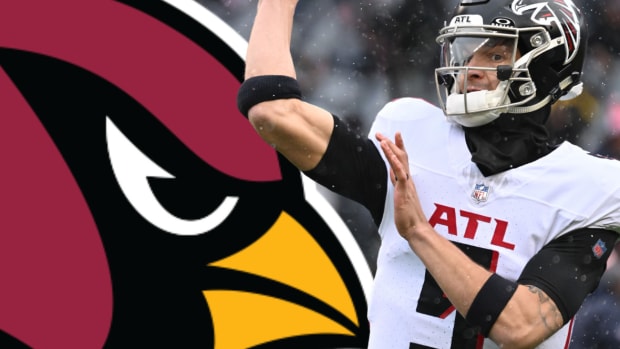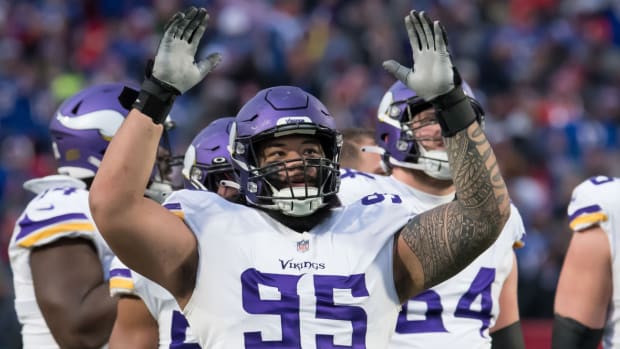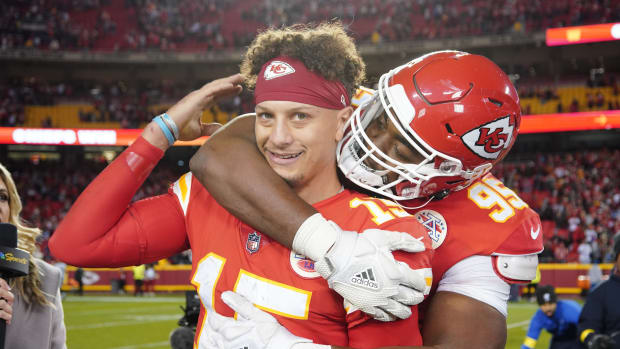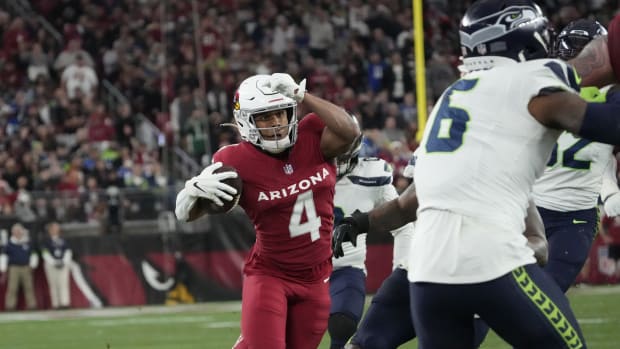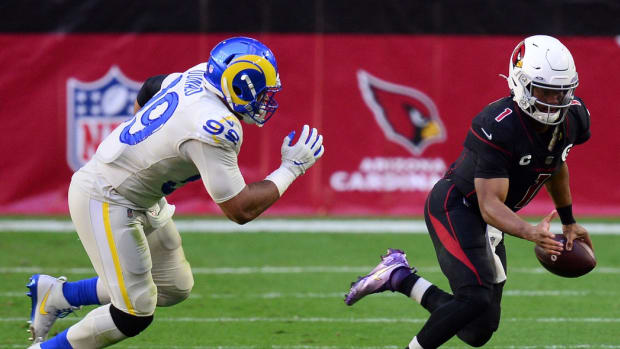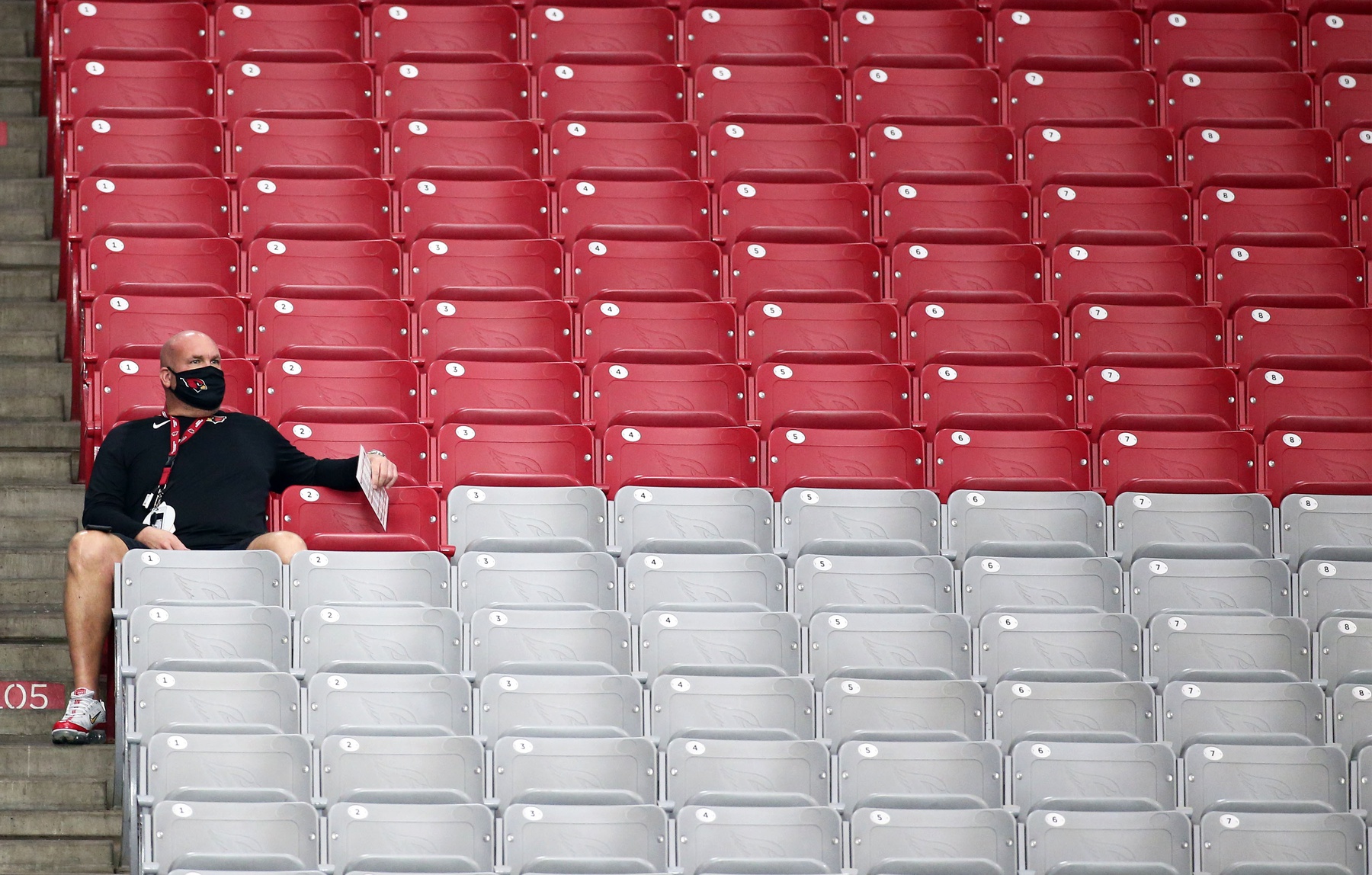
Keim Looks to Improve on Lessons Learned in Draft Process
In his 10th season as general manager of the Cardinals, Steve Keim will decide who will be the newest players to join his roster. When he makes his selection in the first round of next week's NFL Draft, it will be the 67th pick in his career.
The Cardinals' 23rd overall selection rests toward the tail end of the first round. The Cardinals appearance in last season's playoffs means a longer wait in this year's draft. It is a position that the Cardinals aren’t usually in: Since 1967, the Cardinals have drafted past the 20th pick only eight times. For Keim, this is only his third time drafting so late.
“The hardest part is to try and think about who legitimately is going to be there,” Keim said. “You always sort of play it out in your mind and you think about different scenarios.”
Keim became the team's general manager in 2013 following 14 years in the organization. The combination of experience in scouting, drafting, trading, and signing has led the 49-year-old general manager to be in constant evolution.
Just last season, the trade for Rodney Hudson gave a new perspective on the importance of a center. Previously, Keim viewed the center position as a “secondary position” to other higher priority ones. The veteran offensive lineman impressed Keim with his intelligence and communication with quarterback Kyler Murray.
“I mean it was exceptional. So it sort of changed my thoughts a little bit about that position and how critical and how crucial it is to have a good center,” Keim said.
The lessons learned by signing an out-of-this-world center are no different than the ones Keim has learned through the draft process, one that encompasses multiple cooks in a kitchen. In one meeting to organize the top 120 players on their draft board, the room is filled with the entirety of the scouting department, coaches ranging from head coach Kliff Kingsbury to special-teams coordinator Jeff Rodgers. Through the seasons, Keim's system to build the board has gone from a sprint to a jog.
He said, “The one thing that I've thought about is over the years, instead of trying to cram it all into one or two days, is to try to be able to take a step back, put 50 up and put another 30 or 40 up and continue to sort of massage the board, make sure that you have the guys stacked appropriately.”
The structure of Keim's process is the hope of removing the emotional impulse on draft day. During the construction of the draft board, the conversations about certain players in a multitude of certain situations will have been discussed so that if an unexpected player falls to them, they have already made the decision long before the rush of excitement hits them on draft day.
“The thing that's important is to take the emotions out of draft day, that you've already had those conversations,” Keim said. “There's not any sort of emotions on draft day that you get excited and there's all of a sudden, some type of excitement that says, ‘Why is this guy still here?’ ”
The Cardinals front office is finalizing that board of top players, 26 to 27 of whom the staff views as first-round caliber according to Keim. But the Cardinals still have glaring roster needs that will have to be addressed. With the departure of Chandler Jones and Christian Kirk, the team is in need of edge rushers and wide receivers. Additionally, the roster could use improvements at cornerback and on the defensive line.
The hunt for players such as these begins while the regular season is in full swing. Scouts for Arizona analyze and watch college athletes in search of those who could make an NFL roster. It is during the offseason events like the Scouting Combine and college Pro Days that Keim's motto, “We go and fall in love in the fall and then we confuse ourselves in the spring” rings true.
He said, “You've [got] guys like Cooper [Kupp] that come out, that you love him on tape. He doesn't run as fast as you anticipated then all of a sudden you talk yourself out of drafting a player like that because they didn't run as fast as you thought but he plays fast. Trust your eyes.
"That's the hardest part is when all the buzz sort of gets moving that the next thing you know you're thinking about how fast these guys ran, what the media's saying. You just got to sort of have tunnel vision and say, ‘This is what I see.’ And trust it.”
Finding the next Cooper Kupp would certainly be a dream for Cardinals fans who very well could see a wide receiver drafted with the first-round selection or one in the first three rounds. Kupp was a third-round choice (69th overall in 2017). Ten wide receivers have been drafted by Keim, and most have had only moderate success such as John Brown and JJ Nelson bounced around the NFL since donning a Cardinals cap on draft day. Current Cardinals such as Andy Isabella are still trying to find their place in this offense.
The wide receiver position has been a hard one for Keim to draft well. The most successful receiver drafted by Keim (and also the richest) is Christian Kirk, who signed a four-year $72 million contract with the Jacksonville Jaguars this offseason. The former Saguaro High School receiver represents what Keim hopes to preach to his scouts.
“It comes down to ball skills and production at that position because there are guys who have tested well in the spring and run and they're big and fast, but at the end of the day, they're not very good football players,” Keim said. “Christian Kirk was a great example of a guy who was probably a little undervalued because maybe he wasn't as tall and maybe was thought of as a slot, but has obviously become a very good player."
The Cardinals could very well choose to not linger at the bottom half of the draft and move up or down by trading with other teams. Draft days are filled with teams swapping picks and moving up or down the board. One of Keim's best draft picks, safety Budda Baker, was originally a draft slot designated for the Chicago Bears before Keim pulled the trigger and swapped with Chicago in 2017.
The decision to trade up could happen if the Cardinals really want to nab a player they like or they can trade down to gather picks for later in the draft or in a future draft. This year, the Cardinals don't have selections in the fourth and fifth rounds, and they did move up to the fourth round last year and selected cornerback Marco Wilson.
“If there's a guy that we really like, we'll be aggressive and go get him. If not, there's potential to trade back and get additional picks,” Keim said. “We'll just see the way the board falls. I mean, that's really the only way I know to approach it."
With so many draft decisions being made days in advance, a draft-day trade is “the one thing in the draft that creates the most excitement,” Keim said. The process of putting together and finalizing a trade is quick when teams are on the clock to make a pick. Keim said he likes to have a visual board to see where his new draft pick will land him and what players are involved.
Of course the decision on who to draft is a culmination of voices. One being Kingsbury, who will be entering his fourth draft since being hired as head coach. In their inaugural season together, the Cardinals drafted Kyler Murray and attempted to bolster Kingsbury's incoming offense with wide receivers. Since then, the draft has shifted to a defensive focus.
“I think Steve and I have a great relationship now,” Kingsbury said. “We kind of know what each other is looking for in the process, but I've been in the same role all four years."
Keim and Kingsbury were both signed to a contract extension through 2027 early this offseason, a sign of approval and trust by owner Michael Bidwill, who has a hands-on approach to the draft process.
“It's just nice to have a checks and balance system where somebody can come in and ask questions that aren't maybe something that I would think about day in and day out, because he's looking at it from a different lens,” Keim said.
The learning process of the draft will continue to evolve for the Cardinals and their general manager. Whether it is the thoughtful consideration of a player's production or the rush of trade, the lessons learned over the years will all come together when NFL commissioner Roger Goodell says, “With the 23rd pick in the NFL Draft, the Arizona Cardinals select . . . ”
To be sure, the Red Sea is confident that choice won't be an inside linebacker.

